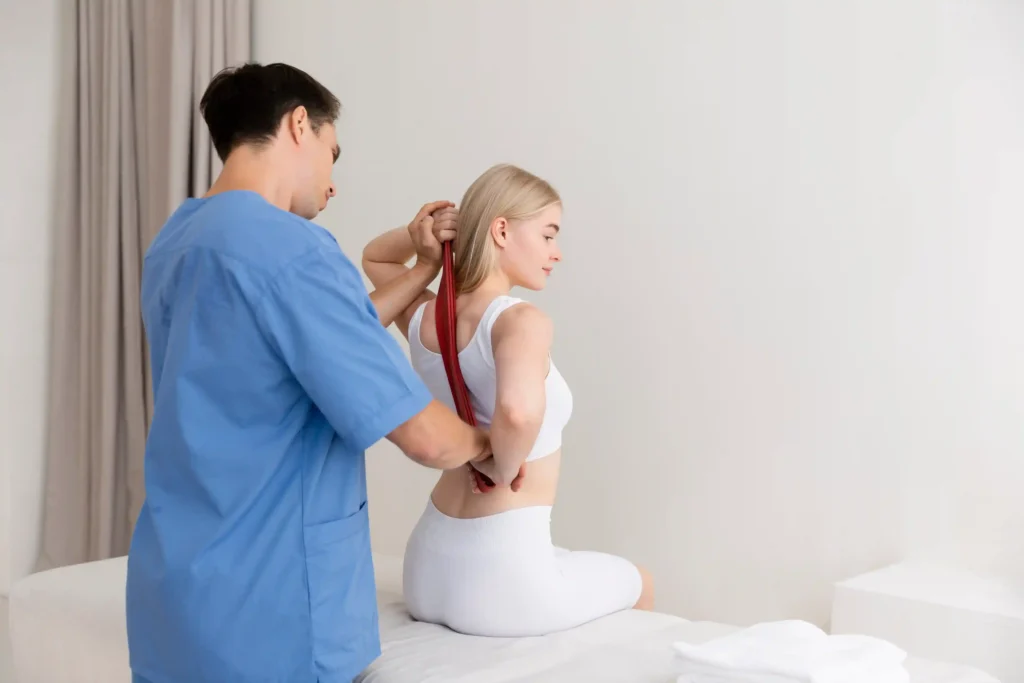Considering Rib Remodeling Surgery to achieve a more sculpted waistline is an exciting step, but it’s natural to have questions about the recovery process, especially concerning pain. At WIH Hospital, we believe in empowering our patients with clear information and effective strategies to ensure your comfort and a smooth healing journey. Understanding Rib Remodeling pain is key to a confident recovery.
What to Expect: Understanding Rib Remodeling Pain
Like any surgical procedure, Rib Remodeling Surgery involves a degree of discomfort or pain as your body heals. The ribs are part of your skeletal structure, and while our surgeons use minimally invasive techniques when possible, the tissue manipulation and bone reshaping will naturally lead to some sensation.
- Immediate Post-Op Pain: Immediately after surgery, you will likely experience moderate to significant pain at the surgical sites. This is normal, and our medical team will administer appropriate pain medication to keep you comfortable.
- First Few Days: The most intense pain typically subsides within the first few days. You might feel a dull ache, soreness, or tightness in the chest and back areas where the ribs were addressed.
- Weeks Following: Over the next few weeks, the pain should progressively decrease, transitioning into mild discomfort or tenderness. Certain movements, like twisting or heavy lifting, might cause temporary increases in sensation.
- Individual Variation: It’s crucial to remember that pain tolerance varies greatly from person to person. What one individual perceives as mild discomfort, another might find more noticeable. Our team will tailor your pain management plan to your specific needs.
How WIH Hospital Manages Your Pain
At WIH Hospital, your comfort is a top priority. We employ a multi-faceted approach to managing Rib Remodeling pain throughout your recovery:
- Pre-emptive Pain Management: Before, during, and immediately after surgery, we administer medications to anticipate and prevent severe pain from setting in. This might include local anesthetics at the incision sites or intravenous pain relievers.
- Prescription Medications: You’ll be prescribed appropriate pain medication for use at home during the initial recovery period. Our team will provide clear instructions on how and when to take these medications to maximize effectiveness while minimizing side effects.
- Non-Pharmacological Approaches: We also encourage and advise on non-medication strategies, such as:
- Rest: Adequate rest is vital for healing and pain reduction.
- Gentle Movement: While strenuous activity is restricted, gentle, prescribed movements can help with circulation and prevent stiffness.
- Cold Compresses: Applying cold compresses can help reduce swelling and numb the area.
- Comfortable Positioning: Sleeping or resting in positions that minimize pressure on the surgical area can provide relief.
- Support Garments: A compression garment or binder might be recommended to provide support and reduce swelling, which can also help with discomfort.
- Open Communication: We maintain open lines of communication. Our medical team will regularly check on your pain levels and adjust your pain management plan as needed. Don’t hesitate to communicate any concerns or changes in your pain experience.
Tips for a More Comfortable Recovery
- Follow Instructions Diligently: Adhere strictly to all post-operative care instructions provided by your surgeon and nursing team, especially regarding medication schedules and activity restrictions.
- Avoid Strenuous Activities: Refrain from heavy lifting, twisting, or any activities that strain your core or rib cage until cleared by your surgeon.
- Stay Hydrated and Eat Well: A healthy diet and sufficient hydration support your body’s natural healing processes.
- Listen to Your Body: If a movement causes sharp pain, stop immediately. Your body will tell you what it’s ready for.
- Attend Follow-Up Appointments: These appointments are crucial for monitoring your healing progress and addressing any concerns, including pain management.
While some Rib Remodeling pain is an expected part of the healing process, rest assured that the team at WIH Hospital is dedicated to making your recovery as comfortable and smooth as possible. We are here to support you every step of the way towards your beautiful, desired silhouette.
Contact WIH Hospital today to learn more about Rib Remodeling Surgery and how we prioritize your comfort throughout your transformation journey.
If you would like to see the full details of Rib Remodeling Surgery, please click here.


